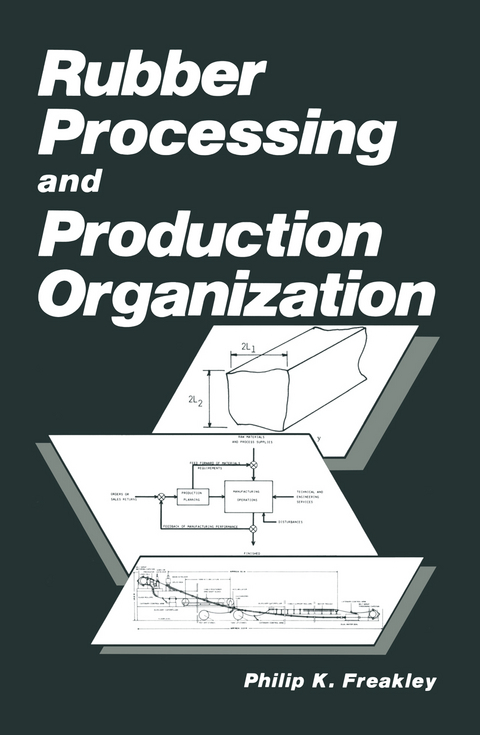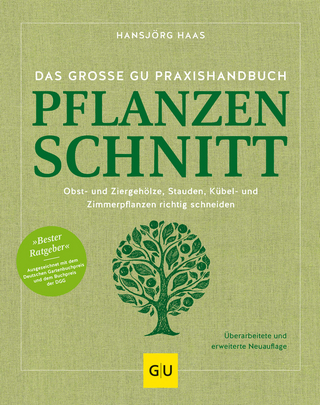
Rubber Processing and Production Organization
Springer-Verlag New York Inc.
978-1-4612-9452-8 (ISBN)
The absence of a book dealing with rubber processing has been apparent for some time and it is surprising that a straightforward text has not been produced. However, this book goes far beyond the scope of a simple technical approach and deals with the full spectrum of activities which lead to successful and profitable product manufacture. The need to deliver a product to a customer at the right time, at the right cost, and at the right quality is a basic premise on which the book is based. The increasingly stringent demands of customers for products that can be introduced directly into an assembly or production line without goods inwards inspection, are placing increasing pressures on the manufacturer. As a result, it is becoming essential to achieve and sustain product quality and consistency, by the monitoring and control of manufacture, at a level which renders all products saleable. The book has been written to satisfy the needs of practitioners in the rubber industry and is certainly not another descriptive text which is only read for interest when more important matters are not pressing. My close cooperation with Philip K. Freakley during the writing of the book has resulted in the incorporation of many of the viewpoints and methods which I have developed and refined during more than 38 years in the rubber industry.
1. Rubber Product Manufacturing Systems.- 1.1. Introduction.- 1.2. The Systems Concept.- 1.3. The Selection and Operation of Tests for Unvulcanized Rubber.- 1.4. The Prediction, Monitoring, and Control of Process Performance.- 1.5. Production Organization.- References.- 2. Materials Behavior and Testing.- 2.1. Introduction.- 2.2. Flow Properties of Raw Elastomers and Rubber Mixes.- 2.3. Measurement of Flow Properties.- 2.4. Thermal and Heat-Transfer Properties.- 2.5. Vulcanization Characteristics.- References.- 3. Principles of Mixing and Internal Mixers.- 3.1. Introduction.- 3.2. The Mechanisms of Mixing.- 3.3. Elements of Internal Mixer Design.- 3.4. Practical Mixing Variables.- 3.5. Flow Instabilities.- 3.6. Laboratory Simulation of Full-Scale Mixing.- References.- 4. Screw Extrusion and Continuous Mixing.- 4.1. Introduction.- 4.2. Elements of Extruder Construction.- 4.3. Hot-Feed Extruders.- 4.4. Cold-Feed Extruders.- 4.5. Design of Extruder Heads and Dies.- 4.6. Determination and Control of Extruder Operating Characteristics.- 4.7. Continuous Mixing.- References.- 5. Calendering and Milling.- 5.1. Introduction.- 5.2. The Operating Characteristics of Two-Roll Mills.- 5.3. Mill and Calender Roll Temperature Control.- 5.4. Calender Configurations and Operations.- 5.5. Roll Deflection and Methods of Correction.- 5.6. Feeding, Sheet Cooling, and Batch-Off Equipment.- 5.7. Determination and Control of Calender Operation Characteristics.- References.- 6. Heat Transfer and Vulcanization Methods.- 6.1. Introduction.- 6.2. Heat Transfer.- 6.3. Prediction of State of Cure.- 6.4. Molding.- 6.5. Batch Vulcanization.- 6.6. Continuous Vulcanization.- References.- 7. Process Control and Quality Control.- 7.1. The Interaction of Process Control and Quality Control.- 7.2. Specifications.- 7.3. Process-Capability Studies.- 7.4. Process Monitoring.- 7.5. Process Control.- 7.6. Quality Control.- References.- 8. Plant Layout and Operations Methods.- 8.1. General Considerations.- 8.2. Transport and Storage in Manufacture.- 8.3. Handling Methods and Operations at Work Stations.- 8.4. Planning and Allocating Space.- 8.5. Layout Synthesis and Evaluation.- 8.6. Installing and Commissioning a Layout.- References.- 9. Company Philosophy, Organization, and Strategy.- 9.1. Philosophy.- 9.2. Company Organization.- 9.3. Market Research and Company Development.- References.- 10. The Economics of Manufacturing Operations.- 10.1. The Flow of Cash Through a Company.- 10.2. Cost Identification and Analysis Methods.- 10.3. Standard Costs.- 10.4. Business Plans and Budgets.- 10.5. Budgetary Control.- References.- 11. Production Management.- 11.1. Production Planning.- 11.2. Purchasing and Inventory Control.- 11.3. Implementing the Production Plan.- References.
| Zusatzinfo | 470 p. |
|---|---|
| Verlagsort | New York, NY |
| Sprache | englisch |
| Maße | 152 x 229 mm |
| Themenwelt | Sachbuch/Ratgeber ► Natur / Technik ► Garten |
| Mathematik / Informatik ► Informatik ► Theorie / Studium | |
| Naturwissenschaften ► Chemie ► Anorganische Chemie | |
| Naturwissenschaften ► Chemie ► Organische Chemie | |
| Naturwissenschaften ► Chemie ► Physikalische Chemie | |
| Technik ► Maschinenbau | |
| ISBN-10 | 1-4612-9452-5 / 1461294525 |
| ISBN-13 | 978-1-4612-9452-8 / 9781461294528 |
| Zustand | Neuware |
| Haben Sie eine Frage zum Produkt? |
aus dem Bereich


